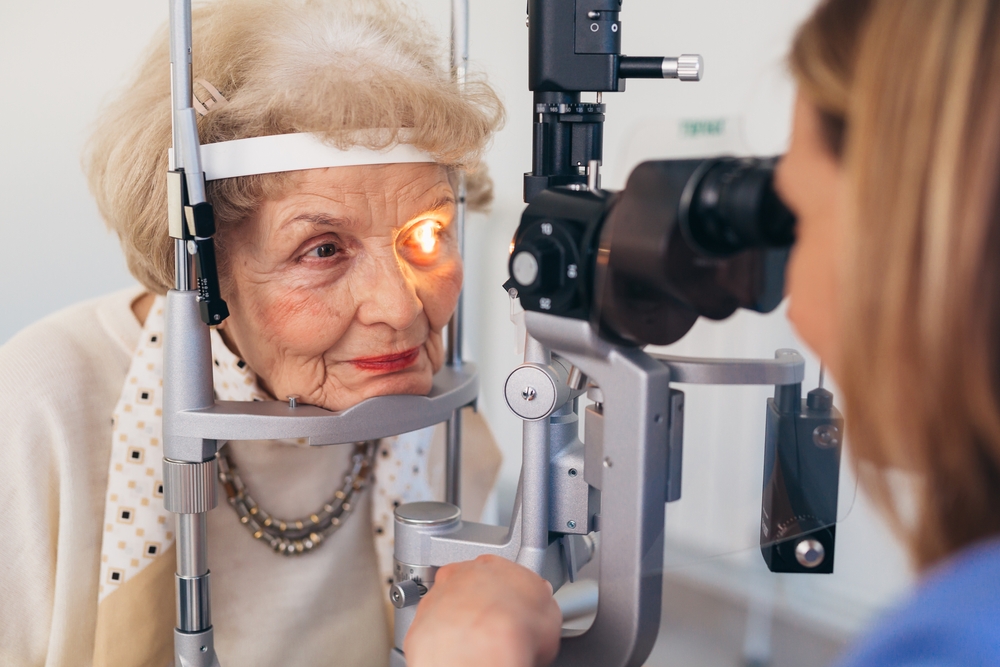One of the biggest decisions you need to make when having cataract surgery is which intraocular lens (IOL) is right for you. Your choice of lens can have a lasting impact on the quality and clarity of your vision.
With all of the lenses available, it’s important to understand your choices so you can make the best decision. Keep reading to learn more about finding and choosing the cataract lens that is right for you!
Understanding Cataracts and Cataract Surgery
Cataracts occur when proteins inside the natural lens in the eye break down and clump together. As these clumps accumulate, they impair vision by blocking light from entering the eye.
Changes within the eye as you age are the most common cause of cataracts. Over time, the lens of the eye becomes less flexible, causing your eye to have difficulty focusing on near objects.
Cataracts typically develop slowly. Symptoms of the condition include cloudy vision, sensitivity to bright light and glare, halos, frequent changes to eye prescriptions, and pupils that appear yellow or milky.
The only effective treatment for cataracts is surgery. During cataract surgery, the natural lens of the eye is removed and replaced with an artificial intraocular lens (IOL), which restores clear vision and prevents cataracts from re-forming.
IOL Options
Depending on your choice of IOL, cataract surgery can be an opportunity to improve your vision and reduce or eliminate your dependence on corrective eyewear.
Monofocal IOL
Monofocal IOLs are the only lenses covered by most insurance plans and Medicare. They can correct vision at a single range of your choosing, although they are most successful at improving distance vision.
One disadvantage of a monofocal lens is that you will likely need glasses for certain activities after cataract surgery. Additionally, Medicare will not cover the cost of laser surgery for implantation. Taking advantage of the safety and precision provided by laser cataract surgery would be an additional out-of-pocket expense with a Medicare-covered monofocal lens.
Multifocal IOL
If you’re someone who needs multiple pairs of glasses to see clearly at all ranges of vision, choosing a multifocal IOL could mean visual freedom. Multifocal lenses are designed to provide clear, sharp vision at multiple distances.
Multifocal IOLs can correct for nearsightedness, farsightedness, and presbyopia (age-related farsightedness). Most people who choose a multifocal IOL will be able to greatly reduce their need for correct eyewear at all distances.
Extended Depth of Focus (EDOF) IOLs
If you want a lens that offers seamless multi-range vision, consider the Vivity EDOF IOL. While multifocal IOLs can provide a clear range at multiple distances, they often cause visual disturbances as the eye moves from one range to another.
The Vivity IOL utilizes proprietary X-Wave technology, which stretches and shifts light to create a continuous range of focus, minimizing glare and halos. It is the only IOL that can improve vision at intermediate range, allowing you to have clear vision as you work at a computer or read sheet music while playing a musical instrument.
Light Adjustable IOLs
Light-adjustable IOLs can provide you with the unique opportunity to customize and fine-tune your vision after cataract surgery. These lenses allow you to preview and adjust the strength of different areas of the lens to improve your vision where you need it the most.
These IOLs are implanted like any other lens, but vision optimization is reached after surgery with a series of light treatments. The light treatments deliver non-invasive UV light to custom-adjust the shape and power of the lens.
Toric Lenses
If you are worried that having an astigmatism is going to limit your IOL choices, you’ll be relieved to hear that most IOLs come in toric versions. Special toric lenses can compensate for the irregular shape of your eye, providing clear and comfortable vision.
It’s important to note that multifocal, EDOF, light-adjustable, and toric IOLs are all considered “premium” lenses and are not covered by insurance or Medicare. While they might be an additional expense at the time of your cataract surgery, they can save you money in the long run by cutting your costs for corrective eyewear.
Questions to Ask Yourself When Choosing a Cataract Lens
Now that you are familiar with your IOL options, here are some questions to ask yourself when choosing the lens that’s right for you:
Do I want to reduce my dependence on eyeglasses after surgery?
If you are ready to enjoy clear, glasses-free vision after surgery, a premium lens can offer you the best chance of achieving your vision goals.
Do I have astigmatism that needs correction?
With a toric lens, having astigmatism doesn’t have to limit your IOL choices or your chances of improving your vision.
Am I comfortable with the potential visual side effects, such as glare and halos?
If the potential for visual side effects is a concern, an EDOF IOL can provide improved vision at all ranges, with a lower risk of glare or halos.
What’s my lifestyle like? Do I drive at night, read frequently, or use digital devices often?
Considering your lifestyle needs can help you choose the right IOL, whether it’s an EDOF for glare-free night driving or a toric lens that can prevent astigmatism from tiring out your eyes while you read.
What does my ophthalmologist recommend?
Your ophthalmologist is an invaluable resource when choosing the right IOL. They can recommend the lenses that will do the most to meet all your vision needs.
With the right IOL, cataract surgery is your chance to improve the quality and clarity of your vision. Knowing your options and asking the proper questions can ensure you choose the cataract lens that’s right for you.
Do you want to learn what IOL might be best for your eyes and lifestyle according to your experienced cataract specialists? Schedule an appointment at Eye Center of Texas in Houston, TX, today!













